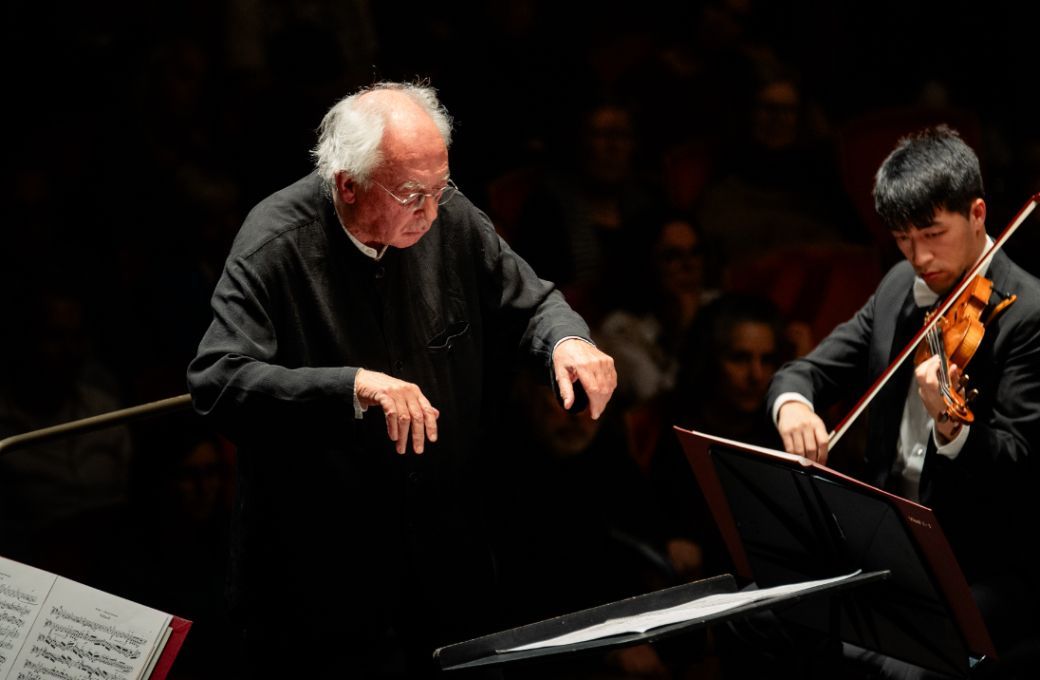The Concertgebouw Brugge sits on the western edge of Bruges’ historic centre like a visitor from an alien world. Next to Bruges’ medieval streets and canals, its red cubist architecture is like a gesture of defiance, yet it works rather wonderfully because it embraces its modernism rather than trying to apologise for it. Inside, its main hall is large and ultra-high-spec, yet feels like a strangely intimate, unusually cosy place to hear music.

It’s the Bruges home for the Antwerp Symphony Orchestra, and the sound in its crisp acoustic is tight and brilliantly focused, with precision placing in the space so that, if you closed your eyes, you’d be able to tell exactly where every instrumental soloist was sitting on the stage. That meant that the rising horn solo that opened Weber’s overture to Oberon seemed to hang magically in mid-air, revolving in the space in a way you don’t tend to get in older halls. The strings then answered it with remarkable lightness of touch and a daring pianissimo that was nevertheless completely clear, like Mendelssohnian fairy music before Mendelssohn. Yet they then summoned up enormous warmth for the big tutti sections, and there was a real kick of energy in the lively main Allegro. A lot of the string players were grinning quietly as they played it, which is a telling sign in itself.
Philippe Herreweghe shuffles rather slowly on and off stage these days, but he conducted Oberon with the energy of a man half his age, giving way to self-indulgence only once, in the lyrical countermelody that had a gorgeous clarinet solo but felt a bit soupy and flat. However, there are few who can galvanise an early 19th-century symphony like him, and his take on Schumann’s Second was an absolute winner.
Herreweghe’s feel for Schumann is a bit like John Eliot Gardiner’s but with much more muscle, perhaps because both conductors have such a strong grounding in earlier music and so they can see the world from which Schumann’s music emerged. There was a lovely sense of pregnant expectation to the opening, with gentle brass and meandering strings, and the Allegro that burst out of it was lithe and energetic, quivering with excitement, which isn’t a phrase you often hear applied to Schumann’s symphonies. Throughout this movement and the acrobatic finale, there was a sense of struggle but also of overcoming, with moments of exhilarating majesty, especially in the big concluding gestures. The flickering Scherzo had ballast to keep it grounded, and there was gorgeous, keening intensity to the slow movement, with glowing horns to support the quasi-operatic strings.
There was keening of a different but similarly involving variety from Marie-Elisabeth Hecker’s solo cello in the Schumann concerto that preceded the symphony. Here the acoustic of the hall felt like an additional instrument, holding everything in perfect balance so that the orchestra was always the partner of the orchestra, never its competitor. Hecker brought gorgeous, overarching lyricism to the cello’s part, proving conclusively that this is music of deep beauty, music that’s impossible to dismiss as the work of a composer on the brink of mental disintegration. She met the orchestra most successfully in the beautiful slow movement, playing with mahogany warmth as the strings plucked away gently beneath her, and the finale was agile but with plenty of orchestral weight. This seemed like a genuine partnership of cellist, orchestra, conductor, and even of auditorium.


